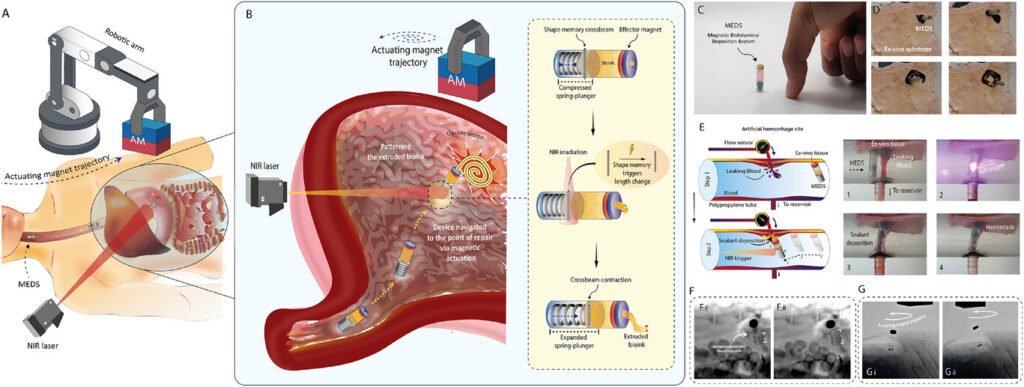A team from the Laboratory for Advanced Fabrication Technologies at École Polytechnique Fédérale de Lausanne (EPFL) has created a miniature device called the Magnetic Endoluminal Deposition System, or MEDS, which functions as a pill-sized bioprinter. Once swallowed, MEDS can be guided through the digestive system using external magnets and activated by a near-infrared laser to release bio-ink directly onto internal wounds such as ulcers or hemorrhages. This approach could eliminate the need for invasive surgery and anesthesia, which are currently required to treat many gastrointestinal injuries.
The device is designed like a tiny ballpoint pen. It contains a chamber filled with bio-ink and a spring-loaded plunger that pushes the ink out when triggered. The bio-ink is typically made from natural polymers, such as those derived from seaweed, and can be enhanced with therapeutic cells or medications. This ink forms a scaffold over the damaged tissue, promoting healing and protecting the wound from digestive fluids.
In lab tests, MEDS successfully repaired artificial ulcers and sealed simulated hemorrhages on synthetic gastric tissue. The team also conducted in vivo experiments in rabbits, where the device was guided to specific sites in the stomach and used to deposit bio-ink. These tests demonstrated that the capsule could be precisely controlled and retrieved using magnetic guidance, and that the ink remained structurally stable for over two weeks. This stability suggests the ink could act as a micro-bioreactor, releasing growth factors and attracting new cells to support tissue regeneration.
Unlike traditional bioprinters, which are bulky and tethered to external equipment, MEDS operates without onboard electronics and is activated remotely. This untethered design allows it to interact directly with tissue surfaces, a key requirement for effective bioprinting. The researchers believe this technology could be expanded to treat injuries in other internal areas, such as blood vessels or the abdominal wall.
Here’s a video from EPFL that explains more:
Article from EPFL: A pill that prints
Abstract in Advanced Science: A Pill That Prints-An Ingestible Bioprinter for Non-Invasive Structured Bioink Deposition

